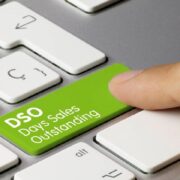What is Inventory Valuation?
Inventory valuation is the practise of calculating the value of the total unsold product of a business or a company at the end of a certain financial year is added to the accounting books of the company. In other words, inventory valuation is a method practised by companies to keep track of their stock and unsold goods at the end of each fiscal year.
The inventory turnover ratio is determined by the inventory stocks which in turn helps the company or enterprise to plan their investments and future purchasing options.
For example, a cell phone company has manufactured 10,000 cell phones in a particular financial year. The number of cell phones sold during that fiscal year was 8000. So 2000 cell phones remained in their stock. The valuation of these 2000 cell phones needs to be calculated and recorded in the company’s balance sheet including their cost associated with transport, overhead, etc.
Why is inventory valuation important?
Distinguishing the inventory items is just a step for inventory valuation. Prices of commodities can fluctuate throughout the year. To determine the total value of the remaining stock, one needs to calculate the fluctuated prices of each period in the same financial year.
Inventory stocks are the largest current asset for the companies. The motive behind the inventory valuation is to sell the manufactured goods and products and retain the lowest amount of goods possible. Also, there are three types of inventory valuation methods. Let us have a look at them.
Different type of Inventory Valuation Methods
The inventory valuation methods differ from region to region. So according to where your retail business or company is located, you need to follow a certain set of rules while conducting inventory valuation. There are mainly three methods that are mostly used: FIFO (First In, First Out), LIFO (Last In First Out), and WAC (Weighted Average Cost). As mentioned earlier, International Financial Reporting Standard (IFRS) accepts the LIFO method whereas the US operated Generally Accepted Accounting Principles (GAAP) does not.
The different inventory valuation methods result in different outcomes. The LIFO method gives you the highest cost of goods sold and the lowest net income whereas the FIFO method does the exact opposite. But neither of these methods can give you an accurate result, i.e, the actual value of your inventory goods, and in this scenario WAC comes to the rescue.
The usage of these methods also depends on the result it brings. Scrutiny of accounts books needed to be done before examining and utilizing these methods. It can bring distinct benefits but robust pitfalls as well. Let’s talk about these methods in detail.
FIFO(First In First Out)
FIFO(First In First Out) method directs that the product which entered first should go out earlier (first) as well. You need to sell your oldest inventory first. This method accurately shows how most retailers do businesses.
LIFO (Last In First Out)
In the case of the LIFO (Last In First Out) method, it is the exact opposite of the FIFO method. The last good that entered your inventory should leave your inventory first.
WAC (Weighted Average Cost)
The WAC (Weighted Average Cost) method balances the pitfalls created by the FIFO method and the LIFO method. Both LIFO and FIFO are used in extreme case scenarios. The WAC method is useful for those businesses which do not possess too much inventory stocks.
Which Inventory Valuation method to choose for your business?
There are several factors through which a business or a company needs to choose the inventory valuation method they are going to use. Some of the factors are:
- The WAC is best utilized when the company is trying to calculate the value of inventory in its business
- The WAC and FIFO is globally accepted when it comes to determining the Cost of Goods Sold (COGS)
- If the self life of the goods does not affect the sales, WAC is the right method to use
- When the income tax is high, LIFO is the ideal method to utilize
Hence, a business can choose a method of inventory valuation based on its requirements. Inventory valuation is an efficient method to keep track of the stock and unsold items, which in turn, also affects the planning for the next cycle of selling goods.













Comments